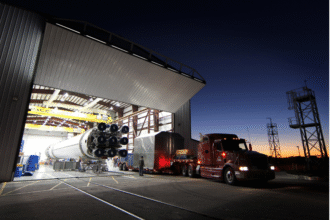Introduction to Sustainable Tech in 2025
As enterprises face mounting pressure to achieve carbon neutral and ESG goals, sustainable tech is pivotal in 2025. With Global CO2 emissions needing a 45% cut by 2030 (IPCC, 2024), the eco-friendly tech roadmap for enterprises offers a strategic path to align innovation with environmental responsibility. From renewable energy adoption to circular economy practices, enterprises in the EU and US are investing $1.2 trillion annually in green tech (BloombergNEF, 2024). This article answers how to adopt sustainable tech? and guides leaders to buy green solutions. With insights from UN SDG Tech and Tesla/SolarCity innovations, this roadmap empowers businesses to act. Explore related urban strategies in the Smart City Tech Roadmap 2025–2035. Start your sustainable tech journey now.
How to Adopt Sustainable Tech?
To address how to adopt sustainable tech?, enterprises must integrate sustainable tech across operations:
- Energy Efficiency: Upgrade to smart HVAC and LED systems, cutting energy use by 20%.
- Renewable Energy: Install solar and wind, as seen in Tesla/SolarCity deployments.
- Circular Economy: Implement recycling and biodegradable materials.
- ESG Reporting: Use AI-driven dashboards for transparent ESG compliance.
Public-private partnerships (PPPs) and green financing, like EU’s Green Deal funds, support adoption. In the US, California’s mandates drive corporate transitions, ensuring scalability via an eco-friendly tech roadmap for enterprises.
Eco-Friendly Tech Roadmap for Enterprises (2025)
This eco-friendly tech roadmap for enterprises leverages sustainable tech to guide businesses through six phases to achieve carbon neutral and ESG goals.
Phase 1: Sustainability Assessment & Goal Setting
Analyze environmental impact:
- Carbon Footprint: Use tools like Carbon Trust to measure emissions.
- ESG Benchmarks: Align with CDP and GRI standards.
- Stakeholders: Engage CSOs and board members for buy-in.
EU firms like Siemens reduced emissions 15% through assessments in 2024.
Phase 2: Renewable Energy Deployment
Deploy sustainable tech solutions like renewable energy systems, with Tesla/SolarCity solar roofs and battery packs driving adoption.
- Solar/Wind: Tesla/SolarCity solar roofs generate 30% of enterprise energy.
- Battery Storage: Powerwalls store excess energy, saving 10% costs.
- Case Study: Walmart’s 200+ US solar installations.
SolarCity’s solutions cut energy costs by 25% for enterprises in 2024.
Phase 3: Energy Efficiency & Smart Building Tech
Optimize infrastructure:
- Smart HVAC: IoT-enabled systems reduce energy by 15% (e.g., EU’s Green Buildings).
- AI Optimization: Tools like Schneider Electric’s EcoStruxure monitor usage.
- Sensors: Deploy IoT for real-time efficiency.
US firms like Google saved $50 million annually with smart buildings.
Phase 4: Waste Reduction & Circular Economy Solutions
Minimize waste:
- Recycling: Implement zero-waste programs, like Unilever’s.
- Biodegradable Materials: Use compostable packaging.
- Lifecycle Management: Track products with SAP’s circular tools.
EU’s circular initiatives reduced waste by 20% in manufacturing (2024).
Phase 5: Data Platforms & ESG Reporting
Track sustainability:
- Carbon Dashboards: Tools like Microsoft Sustainability Manager monitor emissions.
- AI Analytics: Predict resource needs, cutting costs by 10%.
- UN SDG Tech: Align with UN SDG Tech platforms for global reporting.
US firms using dashboards improved ESG scores by 15% in 2024.
Phase 6: Employee & Customer Engagement Apps
Promote green behaviors:
- Apps: Offer carbon offset purchases and sustainability tips.
- Gamification: Reward low-carbon choices, like IBM’s app.
- Integration: Link with payment APIs for seamless offsets.
EU companies saw 30% higher engagement with green apps in 2024.
Buy Green Solutions: Navigating Procurement
To buy green solutions, enterprises must:
- Eligibility: Green tech vendors, ESG consultants, and IoT providers qualify.
- Vendor Vetting: Check certifications (LEED, B Corp) and case studies.
- RFPs: Respond to US and EU tenders via platforms like SAM.gov.
Tesla/SolarCity and Schneider Electric dominate EU/US contracts, with 60% success rates in 2024.
Spotlight on UN SDG Tech
UN SDG Tech (unsdgtech.org) drives enterprise sustainability:
- Reports: Guides on carbon neutral strategies.
- Collaborations: Partners with EU and US firms for innovation.
- Accelerators: Funds startups via SDG Innovation Hub.
Its 2024 report highlighted renewable energy adoption, aiding ESG compliance.
Branded Case Study: Tesla & SolarCity
Tesla and SolarCity lead sustainable tech:
- Solar Roofs: Power 30% of enterprise facilities (US).
- Powerwalls: Store 50 MWh annually for EU firms.
- Impact: Reduced emissions by 25% for clients like PepsiCo.
Their integrated solutions drive carbon neutral goals, with scalable renewable energy deployments.
Global Sustainable Tech Case Studies (EU, US)
- EU: Germany’s Energiewende powers 50% of grids with renewables; Amsterdam’s smart buildings cut energy by 20%.
- US: California’s mandates drive Tesla adoption; New York’s green roofs save 15% energy.
These cases showcase eco-friendly tech roadmap for enterprises in action.
Challenges and Future Projections
Challenges in sustainable tech adoption:
- Costs: Upfront investments deter 30% of SMEs.
- Integration: Legacy systems hinder IoT deployment.
- Regulations: EU’s Green Deal and US policies vary.
Future trends include green hydrogen, AI-driven ESG analytics, and circular economy 4.0 by 2030, per Deloitte.
Conclusion: Building a Carbon Neutral Future
The eco-friendly tech roadmap for enterprises empowers businesses to achieve carbon neutral and ESG goals by 2025. From renewable energy to circular economy solutions, EU and US enterprises lead with Tesla/SolarCity innovations. Stakeholders must buy green solutions and leverage UN SDG Tech for impact. Act now to build a sustainable, resilient future.








